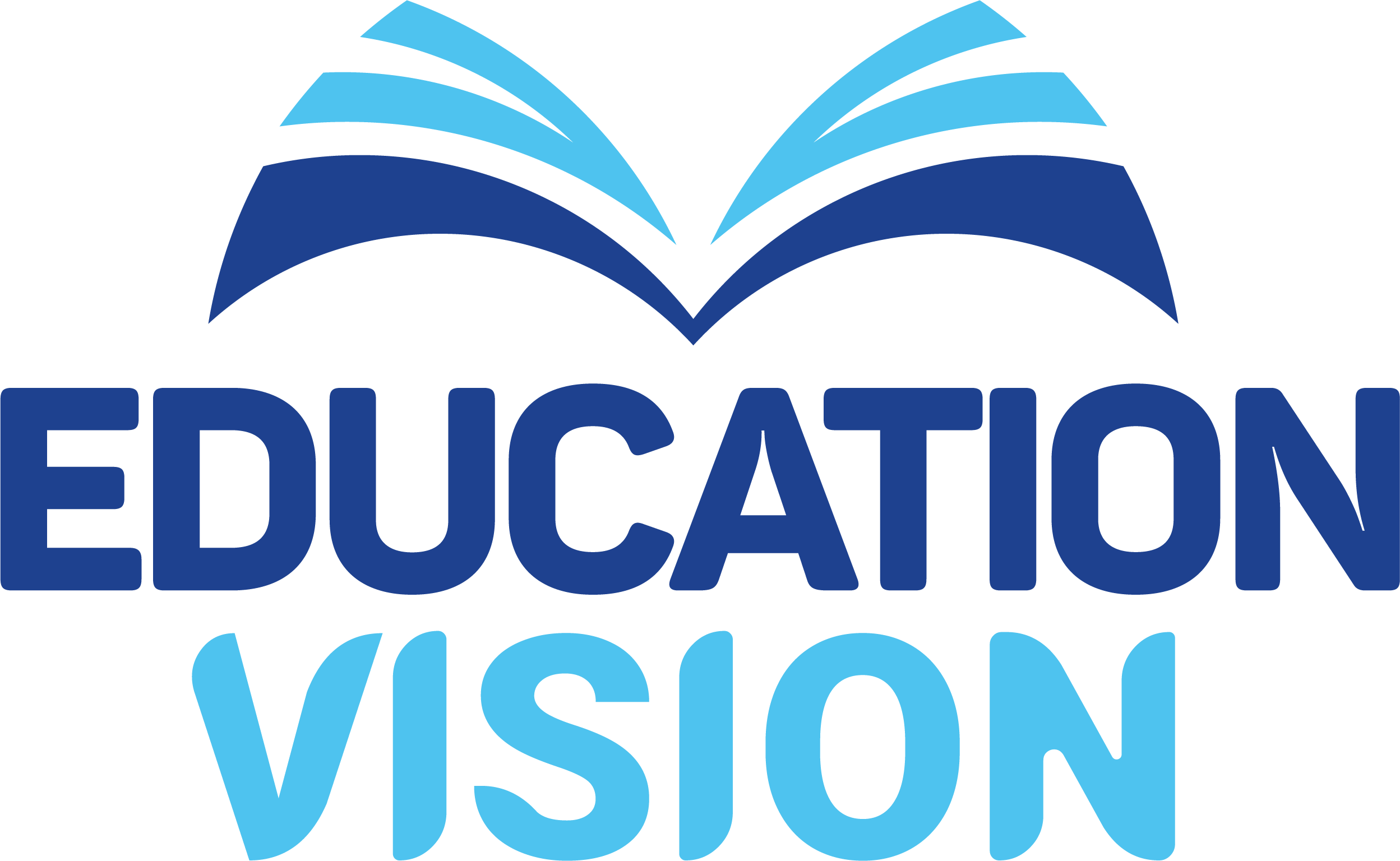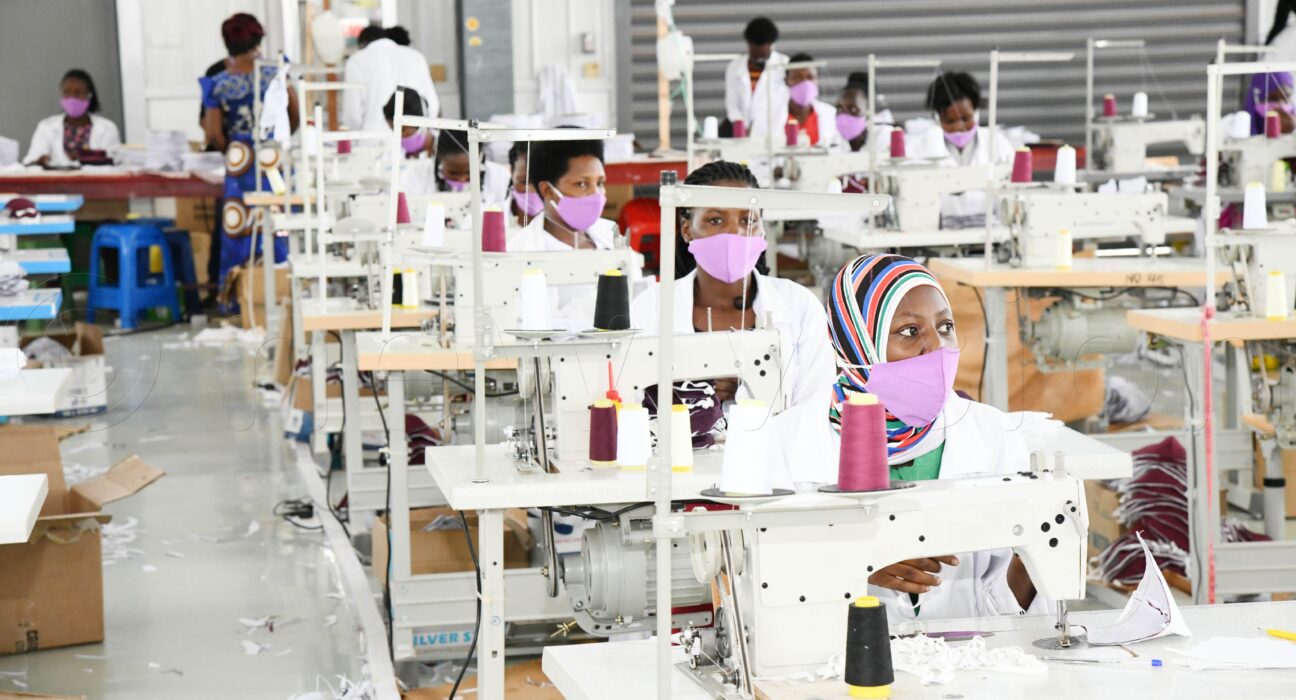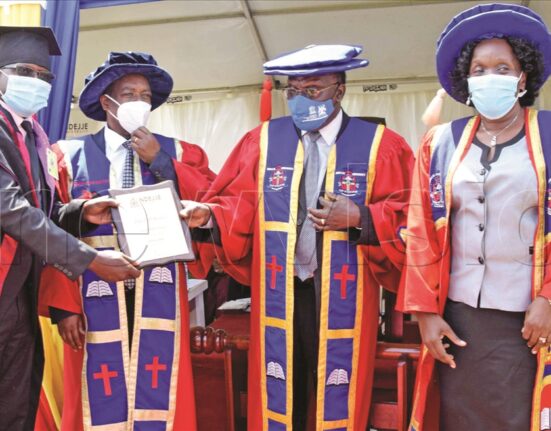By Richard Wetaya
Since the 1920s, when the colonial government established technical education in Uganda, several secondary schools and tertiary institutions have been teaching clothing, textile, and leather science.
Through the years, students in these courses have learnt the skills for turning textile and leather materials into products that are so essential in our lives such as garments, shoes, baskets, dyes, yarns, and carpets, among others.
Bronia Kabashaho is one such student. Now in her final year, Kabashaho has for the past four years been pursuing a bachelor of science in leather tanning technology at Kyambogo University.
“I want to be a leather tanner. Leather tanning technology was not a course that many girls were known to pursue in the past. I chose to break the mould,” she says.
Over the course of her studies, Kabashaho says she has learnt the skills for treating animal hides and skins to produce leather as well as making leather products such as bags, shoes, wallets, and belts, among others. “With these skills, I will start up my own enterprise when I finish the course,” she adds.
However, while clothing, textile, and leather tanning technology study programs continue to produce prospective job creators like Kabashaho, their potential positive contribution is overshadowed by Uganda’s reliance on imported textile and leather products.
“In a way, it is an indictment on the institutions and the human resources being churned out,” Derrick Sseremba, a textile technologist, says.
According to Aaron Wanyama, an associate professor of textile chemistry at Kyambogo University, the money spent on textile and leather products imports could be used to support training in tertiary institutions offering clothing, textile, and leather science training.
“Uganda must develop a critical mass of skilled, efficient, dynamic, and enterprising labour to produce a wide range of local textile and leather products using the country’s fine cotton fibers, yarns and hides and skins,” Wanyama, who heads textile and leather technology department at Kyambogo University, says.
Interest level
But there is another challenge that some scholars say could be linked to the government’s attention to the textile and leather industries. It is the low interest in these vital programmes.

For instance, only slightly over 250 textile and clothing technology, undergraduate students have graduated from Kyambogo since 2004 when the course was introduced. About 10 of these have pursued postgraduate degrees in various fields of textile science and engineering or textile science and technology.
In addition, less than 10 leather tanning technology students have graduated from the university since this undergraduate programme was introduced two years ago.
“The enrollment rates for the courses are still low on account of low awareness. We urge young Ugandans who wish to learn the production processes of the textiles, clothing, leather and footwear industries and supply chains to enrol,” Wanyama states.
These skills, he adds, will not only be useful in the production processes, but also in areas such as design, finance, robotics, product development, logistics, marketing, sales and customer service.
But Kyambogo is not the only institution grappling with low student numbers on useful skill-based vocational programmes.
Statistics from the education ministry show that there are currently slightly over 100,000 students in formal Business Technical Vocational and Education Training (BTVET) institutions. The statistics also show that over 170,000 students attended non-formal BTVET institutions between 2016 and 2021.
The number of students currently in formal BTVET institutions and that of students, who have graduated from non-formal ones over the past five years, is below the annual target number of graduates the Government thought these institutions would produce under the skilling Uganda programme.
It was thought that each year, 450,000 students would graduate from technical and vocational institutions over the ten-year (2011-2020) programme of skilling Uganda, with 50% being females. Currently, the student enrolment at Moroto Technical Institute is 205 and 370 at Nawanyago Technical Institute in Jinja.
Increasing the numbers
To address this challenge, Wanyama thinks there is an urgent need for effective public awareness of the benefits of practical-based courses such as clothing and textile courses to increase enrolment at tertiary institutions.
“There are numerous valuable skilling programs related to garment manufacturing and leather crafting in a variety of government and private tertiary institutions, but many of these programs remain unknown,” he notes.
The students in the two undergraduate programmes – textile and clothing, and leather tanning technology – at Kyambogo are taught how raw materials such as textile fibers and hides or skins are converted into products. These four-year courses are in line with the government’s value-addition plans for cotton and hides and skins.
“Many apprentices who finish the courses are also able to start their own small and medium-scale enterprises in garment construction and leather goods production,” Wanyama says. “The only challenge many grapple with is a lack of capital to buy better and modern industrial machinery,”
Catherine Muzaki, an undergraduate student of textile and clothing at Kyambogo University, also hopes to set up an enterprise upon graduation.
“African fabrics are in vogue across the world and I believe with support, I can create a niche with my brand, which will lay focus on creating fabrics from local materials and natural textile dyes which are eco-friendly,” she adds. “Uganda has to start exporting finished garments and leather products instead of raw materials,”
Vast opportunities
Kyambogo hopes to introduce a master of science in textile science and engineering, a postgraduate diploma in textile science and apparel technology and a diploma in leather science and technology next year.

Wanyama says they will also launch a PhD programme in textile technology which will be jointly delivered by Kyambogo and Ethiopia’s Institute of Textile and Fashion Technology.
There is also a proposal to introduce a master’s in leather science and technology in 2024 to provide opportunities to Ugandans who would to build careers in this field.
You need to have taken Chemistry, Physics, and Mathematics and obtained two principal passes to study these programmes at Kyambogo.
Wanyama says textile and leather science courses provide diverse career opportunities in technology and design, which are crucial to the nation’s strategic goals of youth employment and import substitution.
“Graduates can start their businesses or work as leather technologists and inspectors in garment and leather factories. They can also work as fashion and textile designers and clothing or textile or colour technologists,” he notes.
Vannice Kyarikora, a tutor and instructor at St. Joseph’s technical institute, Kisubi, says increasing investment and uptake of these programmes could enable the country to take advantage of opportunities created by the African Growth and Opportunity Act and the East African Customs Union.
“The Government should also work to enhance on-the-job apprenticeships and wages for employees in factories,” she adds.
Wanyama agrees that better pay would be essential to increasing interest in the programmes and contributing to the development of the textile and leather industries.
Now that clothing, leather and textile science are examinable subjects at O&A levels, there is hope that the student numbers on these programmes in tertiary institutions might increase due to the renewed interest in the fields. Moreover, the Government recognises textile and leather as essential industries for addressing unemployment in its cotton, textile, and apparel strategy and the third National Development Plan.









Leave feedback about this